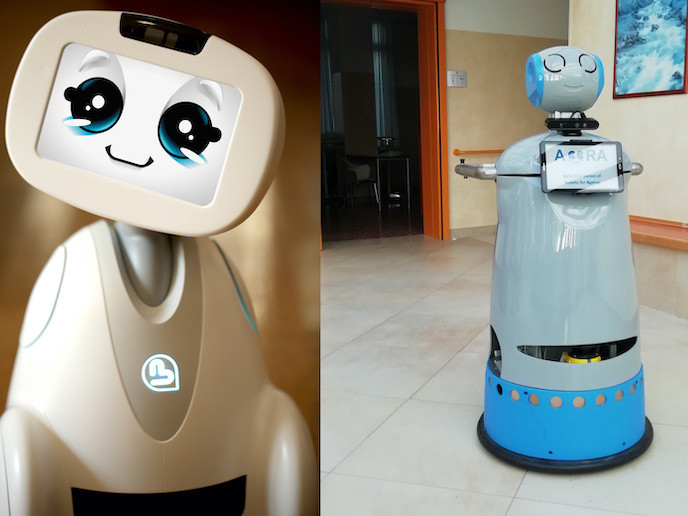Robot assistants help the elderly stay independent
More than 70 %(opens in new window) of people aged 80 and over experience problems with personal mobility, yet still want to remain independent. Others stay fully mobile but struggle with isolation and a lack of social interaction. Social robotics offers a way for the older members of society to live secure, independent and sociable lives, while lightening the workload of caregivers, doctors and nurses. The EU-supported ACCRA project(opens in new window) has been developing advanced social robots, co-designed by the older people who will interact with them the most. The mission of ACCRA is to create robotic solutions that extend active and healthy ageing. ACCRA took three approaches. A robotics application focused on walking support was tested in Italy and the Netherlands using the Astro robot. The team also considered an assisted-living app tested in France and the Netherlands using the Buddy robot. The final tool they wanted to analyse was a conversation application, which assesses and responds to the user’s interests. This was tested in Italy and Japan using the Buddy robot. The project was a joint Europe-Japan endeavour. European partners focused on the methodology, while the Japanese partners focused on Internet of Things(opens in new window) (IoT) capabilities. Together, both teams worked on the co-creation of robot applications. The trial has already shown benefits, says Antonio Kung, CEO at Trialog(opens in new window), the project host. “The participants enjoyed the sessions, so it was already boosting their social contact.”
Mobility, stability, sociability
Astro, the mobility robot, is a large and sturdy assistant which helps people stay on their feet. The robot could well be helpful for those who are recuperating from an operation, for example, as its integrated sensors can detect handgrip strength along with gait parameters. This information can be of very real help to healthcare professionals and draw attention to potential sarcopenia(opens in new window). Buddy is a more diminutive robot, designed to be a companion. Its software allows it to interact and engage with older adults on a social level, or to serve as an intermediary between them and their relatives. Both robots required three main capabilities: basic operating skills, such as moving, sensing and actuating; simple applications which let the robots ask questions and give answers; and some more sophisticated software, which allows the robots to make complex autonomous decisions in the case of an unexpected event such as a fall. “The basic operating capabilities are the easiest to provide, but they will still be costly unless a large volume of robots is produced,” explains Kung, ACCRA project coordinator.
Important feedback
Initial sessions revealed that the range of capabilities needs to be further defined, and that more resources should be allocated to the validation of the robots’ current versions. The results of ACCRA will pave the way to the creation of a further generation of robotics aimed at an ageing population. “It will also benefit science by validating an overall four-step methodology which we have called LIFE: Listen, Innovate, Field-test and Evaluate. Beyond robotics for ageing, we believe that the methodology will benefit others building IoT systems that integrate human factors,” adds Kung. The team has produced a handbook for the methodology to further this goal.







